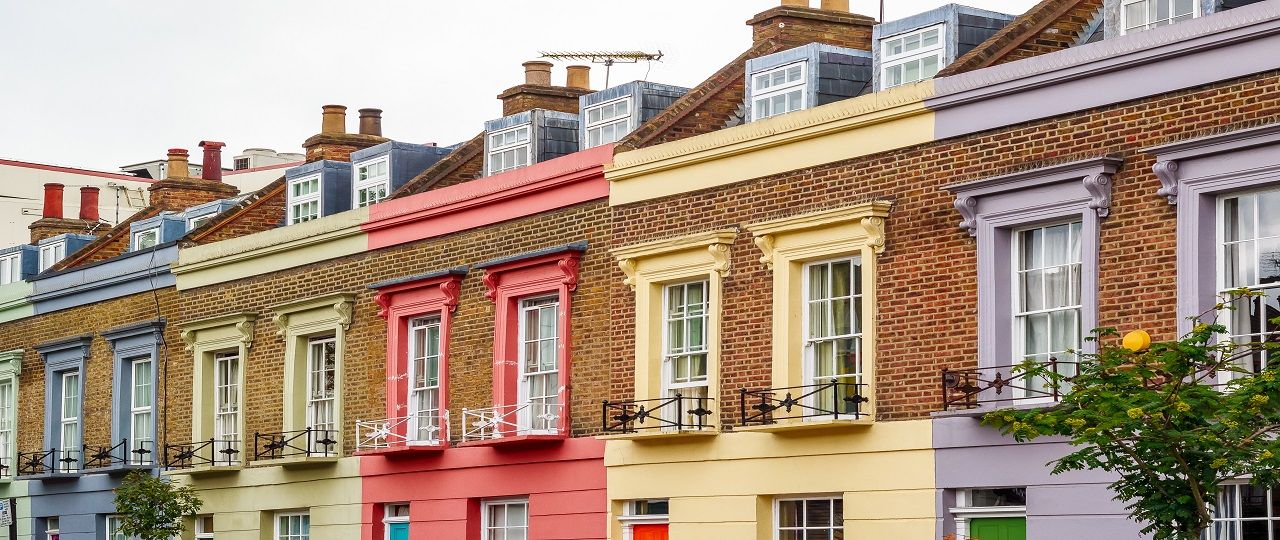
Anna Ambrose
National Head of Lettings


National Head of Lettings
“The supply of rental homes is returning to more traditional levels, which is slowing the rapid price rises that we’ve seen recently,” explains Anna Ambrose, our National Head of Lettings. “This shift means that more traditional rental stock is starting to look better value – although premium pricing for best-in-class homes is still holding firm, whether that’s a house with extremely high-quality interiors or one that falls within the catchment area of a sought-after school.”
Part of the re-balancing is because demand for rental homes is easing. There were 17% fewer tenants looking for a property in the first three months of 2024 compared with the same time last year, according to Rightmove.
But it’s important to note that these figures come off the back of a frenetic period for the rental market. The number of tenants house hunting is still 54% higher than the more settled market of 2019 and competition for rental homes remains relatively tough, with an average of 13 tenant enquiries per property.
While the rental market has been relentlessly busy in the last couple of years, we’re starting to see a return to seasonal patterns says Anna. Tenant appetite traditionally peaks during spring and summer, before cooling off in the final quarter of the year. This is particularly the case for larger houses in areas with thriving schools, such as North Oxford, as families look to move home during the school holidays, before the new academic year.
Alongside the reduction in tenants actively looking for a new home, the number of rental homes on the market has swelled and is now 11% higher than this time last year, according to Rightmove.
“Regionally, we’ve seen some homes come onto the market from accidental landlords – people who are downsizing or relocating overseas – who are opting to hold onto their assets and put tenants in because rents are still strong,” says Anna.
While there are more rental homes available than last year, supply is still 26% below 2019. Rightmove estimates that nearly 50,000 rental homes are needed to bring supply back to pre-pandemic levels.
Average rents have jumped in recent years, with the imbalance between demand and supply pushing rents on new lettings up by 30% since 2021, according to Zoopla. The impact of this is that we’ve seen a high number of renewals, with many tenants deciding to renew their tenancy agreement at a higher rent - rather than re-entering the rental market and potentially paying even more on a new letting.
Having said this, Rightmove reports that the overall number of rental homes being reduced in price is at a five-year high for this time of year. However, this may well be because the ability of tenants to pay current rents is being tested, and we’ve perhaps reached an affordability ceiling.
“Landlords are still in a good position to dictate pricing to certain extent, but it’s important to be realistic. You need to respond to the demand in your local area, and acknowledge the quality of property on your hands: what’s achievable for one letting doesn’t necessarily apply across the board,” explains Anna.
She adds, “our team in Cambridge recently put a house on the market for £8,000 per month and it received multiple bids over asking – but this was a high-quality family home in a city with enduring popularity, thanks to it being an employment hub and home to the university and excellent schooling.”
Outside London, average advertised rents rose to a new record of £1,291 per calendar month between January and March, according to Rightmove. But the pace of growth has fallen for the second quarter in a row.
Rental growth has cooled more considerably in London. Average advertised rents in the capital in the first three months of 2024 reached a new record of £2,633 per month, but this is only a slight annual increase of 5.3% which means rent growth has steadily slowed since the peak of 16.1% in Q3 2022 (Rightmove).
Activity in prime central London has picked up from the lows of 2022, but it remains well below pre-pandemic levels. Our data shows that the number of lettings in the first three months of this year rose by 8% quarter-on-quarter.
Drilling down by property type, the number of flats being let is up 10% on the last three months of 2023; perhaps an indication that people are adapting to more hybrid ways of working, with tenants seeking a base in the capital during the working week. “There is momentum behind returning to the office and people have been reminded of the value of being in London,” explains Anna. “This is driving interest in pied-à-terre style homes, which are very popular with homeowners whose main house is outside the capital.” Generally, homes at higher price points - of more than £2,000 per week – are faring better.
Are you thinking of letting your property out? If so, read our guide here.